A Fine Balance (Page 2)
Arthur Erickson
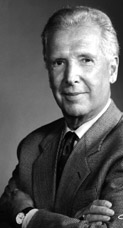
Born: Vancouver, 1924
Resides: Vancouver
Awards include:
British Columbia Lieutenant Governor's Medal for Architecture (2001)
Gold Medal from the American Institute of Architects (1986)
Royal Architectural Institute of Canada Gold Medal (1984)
Grande Médaille d'Or from l'Académie d'Architecture de France (1984)
Order of Canada (1981)
The International Union of Architects' Auguste Perret Prize (1975)
Works include:
Museum of Glass, Tacoma, Wash.
Robson Square, Vancouver
Canadian Chancery in Washington, D.C.
Roy Thomson Hall, Toronto
Museum of Anthropology, University of British Columbia, Vancouver
Simon Fraser University, Burnaby, B.C.
Thumbing through a magazine changed Arthur Erickson's life.
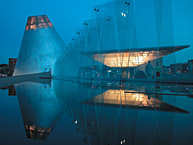
Anne Gingras
He was already an accomplished painter -- years earlier, he had become the youngest artist ever to win an honourable mention at a Vancouver Art Gallery exhibit and counted Group of Seven legend Lawren Harris among his admirers. Following a stint in the army during World War II, he returned home with thoughts of a career in diplomacy.
Then he saw the photos in Fortune magazine that would send him to McGill to study architecture. The photos were of Frank Lloyd Wright's majestic desert home and workshop, Taliesin West. "If an architect could do that, I thought, then I'll be an architect," remembers Erickson, BArch'50, LLD'75.
At the time, he had only recently returned to Canada from a rather mysterious sojourn in India. At the start of the war, he had attracted the notice of British intelligence because of his familiarity with the Japanese language, which he studied as an undergraduate at the University of British Columbia. Erickson was seconded to the British Army and shipped off to Bombay where he and other Allied soldiers were sequestered with a group of Japanese men who were working with the British.
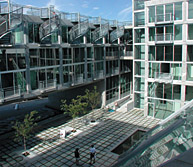
Nick Milkovich Architects
"We lived in the same room, ate together, slept together. We were supposed to be picking up their language, only they were far more interested in learning English than we were in learning Japanese." To this day, Erickson is uncertain about what their ultimate mission was supposed to be, though it did seem to entail going behind enemy lines. "We were under orders not to ask questions." In any case, the order to infiltrate Japan never arrived. When time came for Erickson to return home, he missed his boat -- he was too preoccupied studying an ancient temple.
He recalls his time at McGill fondly, and remembers the School of Architecture's director John Bland "as a wonderful man, the picture of tolerance." Though Erickson was a veteran and one of the school's older students, he wasn't above practical jokes. One target, a seemingly uptight British-born professor, confounded Erickson's expectations when he chortled at finding his office buried under acres of toilet paper instead of screaming for the culprits' heads.
Erickson went on to become a teacher himself at UBC after graduating from McGill, and it was there that he created his first major stir as an architect. A competition was held to design a new university -- Simon Fraser -- that would be situated on top of Burnaby Mountain. Together with architect Geoffrey Massey and supported by a team of his UBC students, Erickson entered the competition.
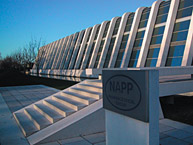
Ricardo Castro
"It might be the most challenging and taxing work I ever did," Erickson says. "At one point, I gathered everyone together and said, 'Do we want to win this or do we want to say what we really think about education?' I felt very strongly that a university should be a meeting ground. Instead, universities in North America were always splitting the different disciplines into different buildings."
Erickson's vision for the new university rejected multi-storey buildings. Instead, he turned to the Acropolis in Athens and the hill towns of Italy for inspiration, structures that were very much in tune with their mountain habitats. And, not surprisingly, Erickson was careful to ensure that the university's various departments would not be physically isolated from one another.
To control costs, Erickson made ample use of concrete. In the years to come, it would become his signature material and Erickson's skilful manipulation of concrete to create textured and powerful forms would do much to give the underappreciated substance new appeal.
He won the commission and Simon Fraser became a smash hit. Said Simon Fraser's first chancellor, Gordon Shrum, "If we had chosen anyone else's design, people would never have come from all over the world to see the university."

University of Lethbridge
Architecture professor Ricardo Castro is part of a team of scholars assembled by the Canadian Centre for Architecture to prepare a book about Erickson's major works in concrete. Castro says there are few architects who rival Erickson when it comes to his mastery of architecture's various elements. "He creates urban spaces that are wonderful meeting places." He likens Erickson to a master cinematographer and says it's no surprise that the architect's works are frequently used for films.
"With the Canadian Chancery in Washington, for instance, it's remarkable in how it relates to the other buildings in the capital. You get the most incredible glimpses of the city that surrounds it."
Some question Erickson's fondness for water in his designs. "There are all these basins and fountains and waterfalls in his work," says Castro. "Why on earth would you do that in a city like Vancouver where it's always drizzling? It's because the lighting conditions in the city aren't great that he uses water so often. One way to create more light is by using reflective surfaces. Water acts as a mirror."
In a speech to McGill architecture students three years ago, Erickson painted a grim picture of the direction his profession seemed to be taking. "Design is seen as entertainment and entertainment is becoming the goal of too much of our design, our museums and shopping centres," he declared. "The problem is that the delusion of entertainment lacks a purpose other than to enchant and is devoid of meaning. It may amuse us for a bit, but after the initial hit we are left with the dark feeling of desolation."
Erickson stands by his words. "Architecture is too often viewed as packaging. Most of our cultural buildings today are built to be little more than wrapping paper. It's a crass way to sell a product."
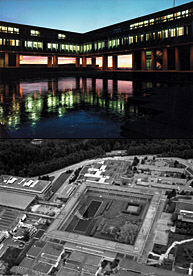
Simon Fraser University
In Erickson's view, it isn't enough for a building to simply be pretty. It ought to challenge you in some way, make you see your surroundings in a new light. It ought to enhance the very act of living.
"Good architecture can help define a very distinct culture," Erickson once told Report on Business magazine. "Just look at San Francisco or Rome -- everybody that lives in those cities loves them -- or look at Naples, where people sing on their balconies in the morning doing their laundry."
Erickson's ability to foster powerful connections between his works and their locations is legendary. It's difficult to imagine Simon Fraser existing anywhere else but atop Burnaby Mountain, for instance. "Nobody does that with more acuity," says Irena Murray, MArch'91, chief curator of McGill's Canadian Architecture Collection.
Erickson's most recent triumph is the Museum of Glass in Tacoma, Washington, a building that Vancouver Sun architectural critic Trevor Boddy says "would be a career-capping achievement for any other architect." A large tilting cone, dramatically rendered in glass, replicates the look of the huge sawdust burners that were once familiar sights in the American northwest. The museum offers a variety of gorgeous views of the nearby waterfront. A transparent workshop amphitheatre affords visitors an opportunity to watch artisans in action, creating new works amid the roar and heat of the furnaces.
When asked what advice he would give to budding architects, Erickson's reply is startling. "Go into another profession. Architecture is full of heartbreak. Buildings don't usually last all that long. Most of them come down. Houses are sold and changed by their new owners. When you really put your heart into something, it can be devastating when it all comes apart."
He has taken very public exception to the addition of new housing units close to Simon Fraser and to renovations done to Roy Thomson Hall -- changes that he believes compromise what he accomplished. Erickson is often regarded as a curmudgeon by city planners, real estate developers and competing architects, many of whom have felt the sting of his public putdowns. He describes most modern hospitals, for instance, as "ugly and damaging to the soul, designed like a garage for spare parts."
His reputation as a troublemaker doesn't alarm Erickson in the slightest. As he once told the Vancouver Sun, "There is a kind of power that comes with not needing to be liked."


